Up Next

In an occasional series, The Race’s writers make the case for or against elements of motorsport they love – or hate. The latest instalment rewinds 25 years to a fortnight when Spa and Monza certainly weren’t predictable…
Every time the Belgian and/or Italian Grands Prix turn out to be tepid, a little part of me feels affronted and somehow surprised. And that’s because that part of me is always going to see Spa and Monza as the Spa and Monza of the 1995 Formula 1 season. Which means going into this part of the year full of expectation for crazily varied weather and upset-triggering high attrition.
The plain headline results of those races say enough about them. Spa was a 1-2 for title rivals Michael Schumacher and Damon Hill, but they had to come through from 16th and eighth on the grid respectively to get there. Monza was Johnny Herbert’s second Benetton win, and it came despite him qualifying two seconds off the pace in eighth – mainly because almost everyone in front of him retired for a bizarre reason.
My love for the 1995 season is partly just because it was the sole year when F1 dominated my world, coming just as motorsport became my all-consuming teenage obsession and just before I realised CART, Indycar and Formula Ford were ‘better’ than F1.
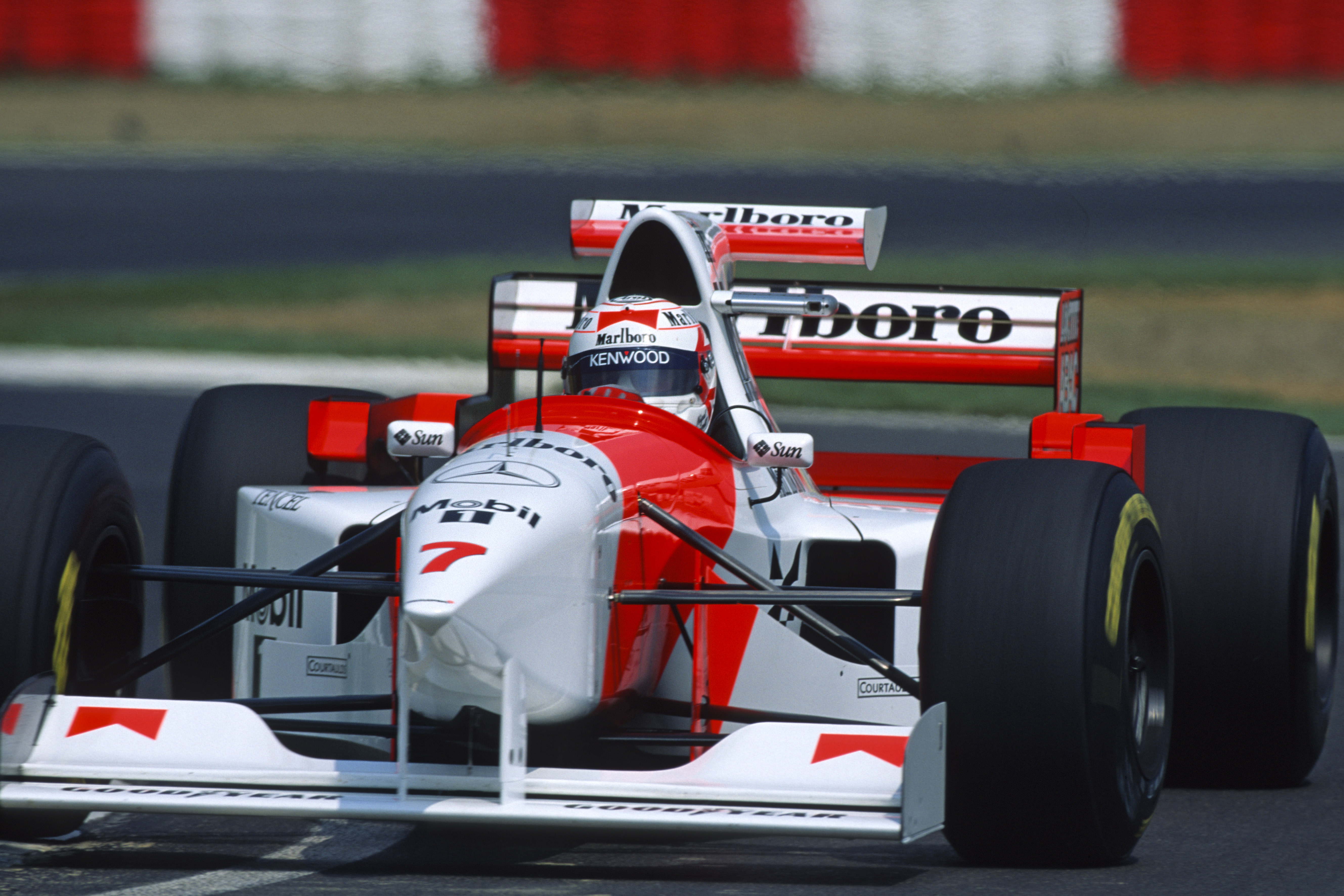
I’m sure many at the time found little to enjoy with Ayrton Senna gone, Nigel Mansell just an embarrassing and brief cameo and Alain Prost on the sidelines flirting with a comeback that never happened.
But I’d argue that while 1995 had more than its fair share of what Murray Walker described in his British Grand Prix commentary as “stone-bonkingly dull” races, when it kicked off, it kicked off with a vengeance.
I’m sure I’ll contrive excuses to rattle on about that year’s Imola, Montreal, Silverstone, Nurburgring, Suzuka and Adelaide races either in other columns or episodes of Bring Back V10s, but today I’ll limit myself to Spa and Monza because the level of intrigue and expectation I’m feeling around those races in 2020 is painfully less than my 1995 self’s experience.
SIX OF F1’S GREATEST LAPS EVER
Spa’s mixed-up grid of an all-Ferrari front row of Gerhard Berger leading Jean Alesi and the title contenders way back was caused by rain affecting both qualifying sessions and leaving very narrow windows for optimum lap times on both days. A spin for Hill and a gearbox electronics problem for Schumacher meant they missed those moments.
By one-third distance Hill and Schumacher were first and second. But their steady progress to those spots was nowhere near as exciting as what the other usually-overshadowed frontrunners were getting up to while they had centre stage.
This isn’t the place for a full race report, but the events of the first half-dozen laps have been too easily forgotten by history so they deserve recounting.
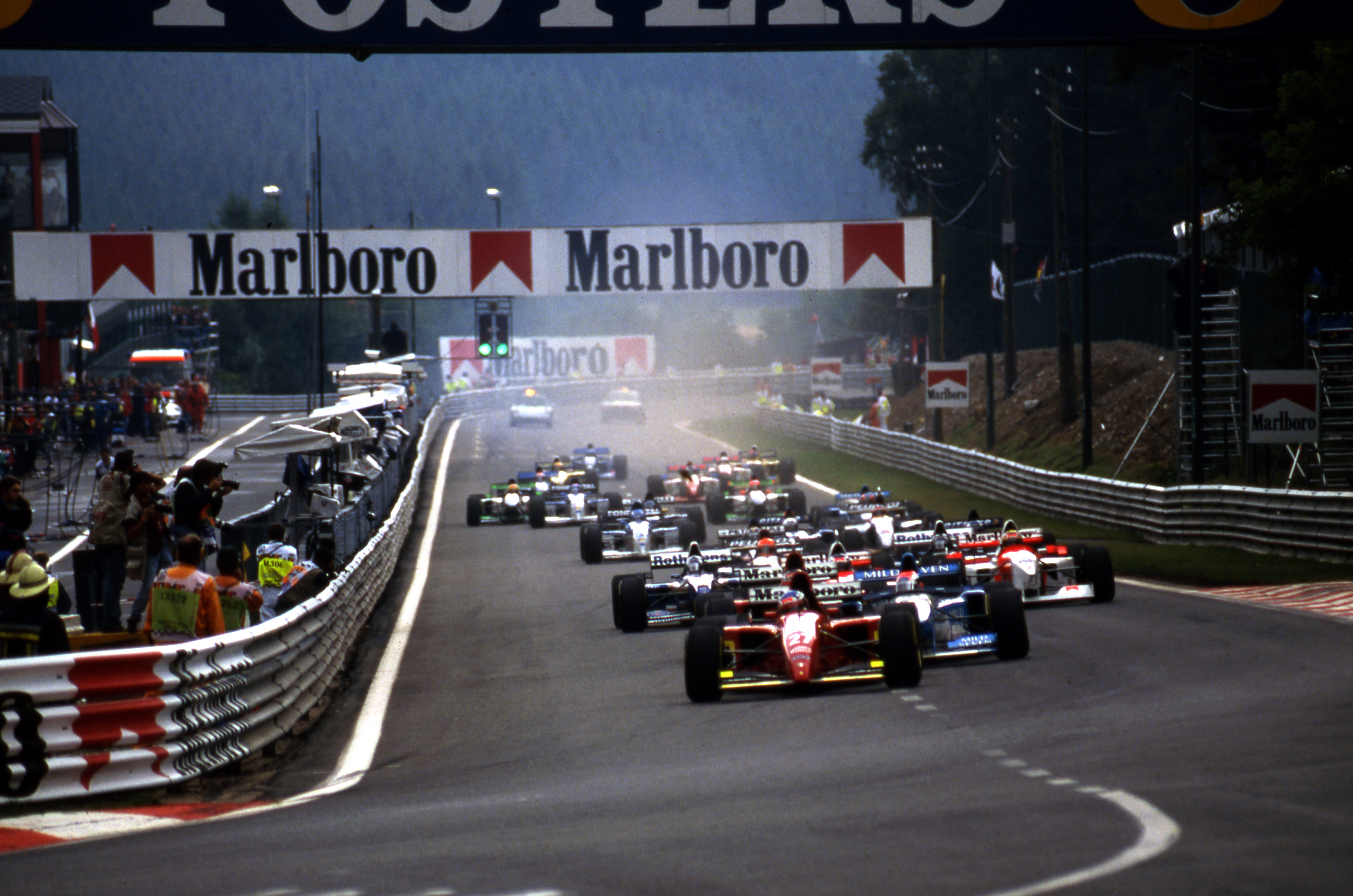
On a dry track but with drizzle in the air, Berger dropped from first to third off the line, with Alesi taking the lead and Herbert going into Eau Rouge right alongside the Ferrari before backing out of it mid-corner.
But the Benetton – running very low downforce – was still able to slipstream Alesi down the Kemmel Straight and take the lead down the outside into the corner with a beautifully-judged move finished off with a lock-up and big twitch.
Next time around third-placed Mika Hakkinen spun out of La Source, nearly pincering future McLaren team-mate David Coulthard’s Williams into the wall in the process, and stalled, ending his race.
Alesi then retook the lead from Herbert down the inside into Les Combes on lap two (three lead changes already in 1.3 laps).
The other Ferrari was going backwards – Berger held off Coulthard’s first big dive into La Source by carrying more speed around the outside but the move worked second time around and Hill then followed his team-mate past the Ferrari into Les Combes.
Berger would later drop out with electrical problems, by which time he has been the sole Ferrari as Alesi pitted from the lead on lap four with what he thought was a puncture but turned out to be a suspension breakage.
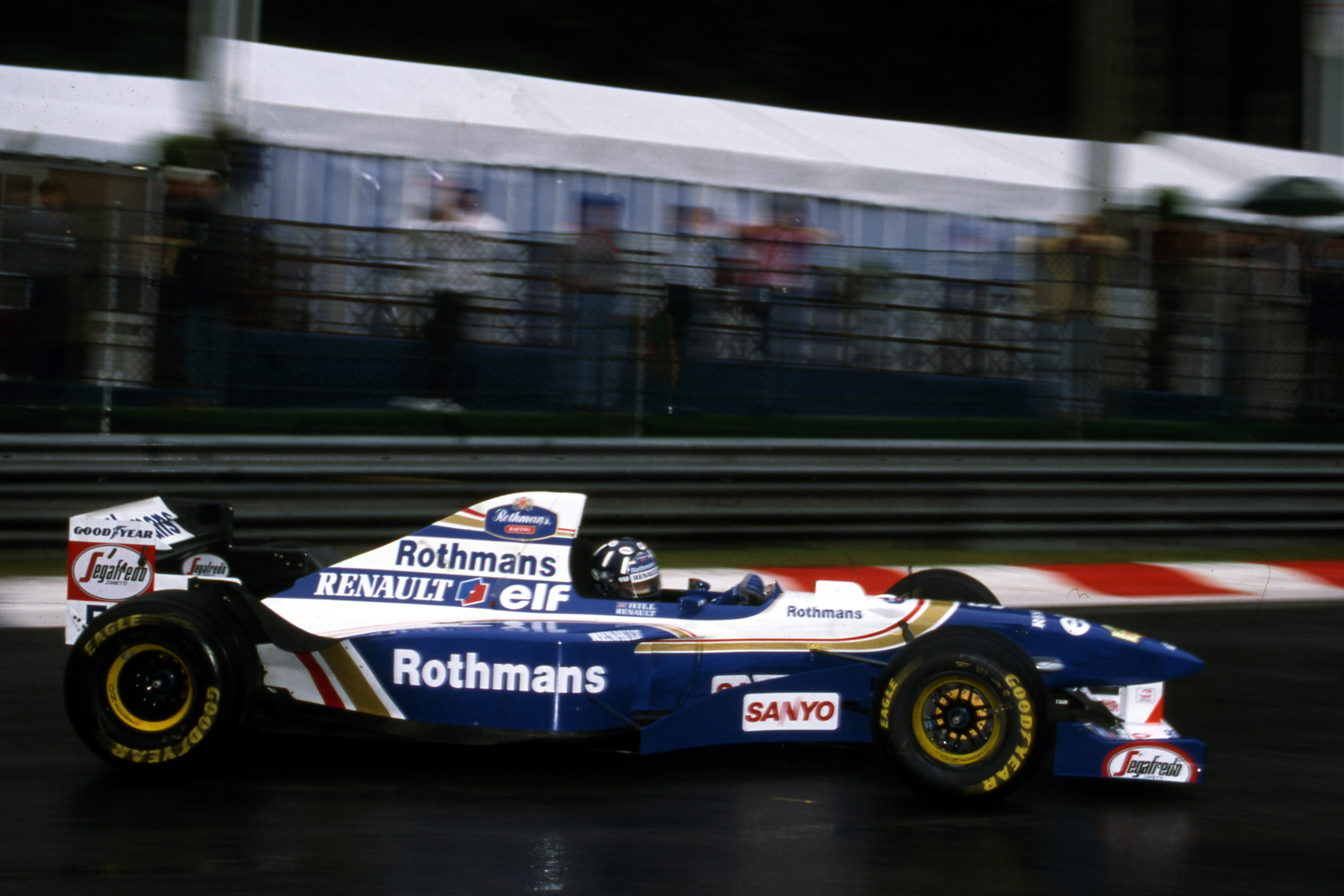
So now Herbert led from Coulthard and Hill as the drizzle intensified. Coulthard tried his La Source move on the Benetton and they came very close to contact as Herbert closed the door.
Up the Kemmel Straight Coulthard attacked down the outside and Herbert braked late, got into the corner first but lost it and spun 360 degrees across the grass, rejoining rapidly in third behind the two Williams only to spin again at the Bus Stop and have a miserable run to seventh thereafter.
Five lead changes in six laps, and the most combative laps of Herbert’s frustrating Benetton career.
Things calmed for a spell after that, Coulthard storming away until he retired with gearbox failure thanks to a broken oil line from a first corner tap from Eddie Irvine’s Jordan. That meant it was Hill leading from Schumacher by 14 seconds. Alesi, Coulthard and Herbert would leave Spa with zero points, their brilliant wheel-to-wheel antics unrewarded and soon forgotten by most.
SCHUMACHER VERSUS HILL
I was such a committed Hill fan going into August 1995 that I watched the highlights of his Hungarian GP win every night from that Sunday to the Belgian GP.
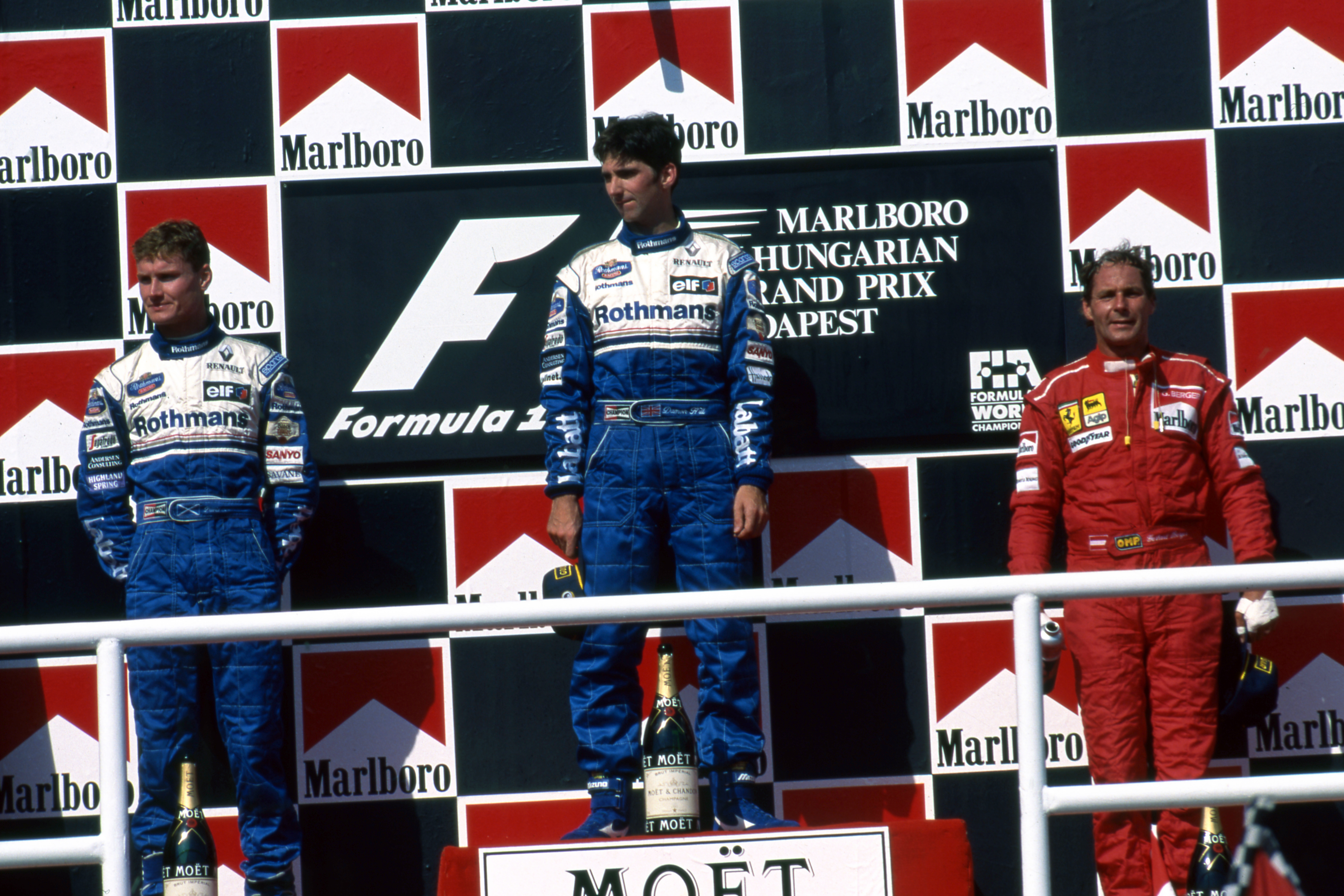
By the end of the Italian GP, I’d switched allegiance to Coulthard and decided Schumacher wasn’t so bad after all. Two decades later, I’d read in his extraordinary book of the mental turmoil Hill was in as he dealt with the pressure of that season and realise my teenage self had been a bit harsh.
The big Spa lead Hill held after Coulthard’s retirement turned into defeat mainly because Williams didn’t handle the changing weather as well as Benetton. Hill came in for wets when it first rained properly, then had to come back in for slicks because it immediately dried up, but just after that it rained in earnest and he was back in for wets. Along the way he picked up a pitlane speeding penalty and had to fight back past Martin Brundle’s Ligier to reach second.
Schumacher braved it out on slicks through the first shower, even as lap times went 30s slower than dry pace, and only went for wets when it really, really rained.
Along the way, Hill on wets crossed paths with Schumacher on slicks in the wet, creating a legendary and contentious two laps in which Schumacher’s defensive driving enraged Hill and led to a suspended ban.
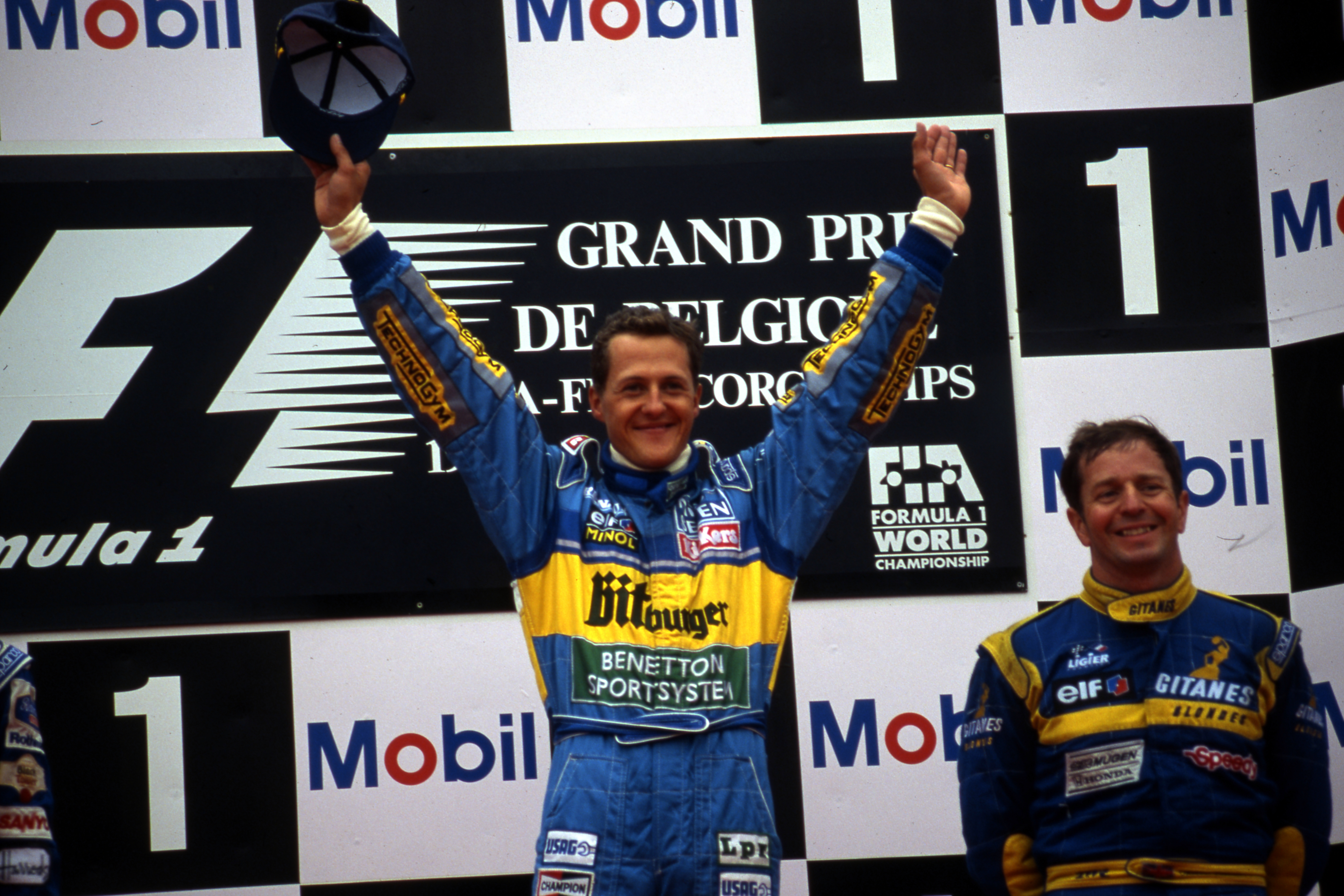
Many back then felt that was way too harsh, and though camera angles aren’t completely conclusive, I still feel that even if there were moments that crossed the line, the majority of Schumacher’s driving in that battle was absolutely otherworldly heroism as he managed to outbrake Hill to hold onto his lead even while on tyres that should’ve had utterly zero grip. Even when Schumacher finally braked too late and skittered over the Les Combes grass, he was soon repassing Hill as the track dried and it was the Williams’s turn to run wide on inappropriate tyres.
My slight disappointment in Hill after Spa then became a total loss of faith when he ploughed into the back of Schumacher at Monza as they lapped Taki Inoue’s Arrows and took them both out, in one of F1’s clumsier title rival collisions.
ATTRITION!
That incident accounted for two of the places Herbert gained on his way to Italian GP victory. The others were due to: leader Coulthard being spat into the gravel with a wheel bearing failure, second-placed Berger retiring with smashed suspension in a terrifying incident where team-mate Alesi’s onboard camera flew off and struck the other Ferrari and then Alesi losing another Monza win thanks to a wheel bearing failure of his own (a fiery one in this case, because Alesi was always good for drama) just eight laps from the end.
It was a far cry from the current era of radio messages about problems that turn out to be inconsequential. Massive respect to the ingenuity and standards of modern F1 tech… but I do miss a good engine explosion for a race leader.
A GLORIOUS DRIVER MARKET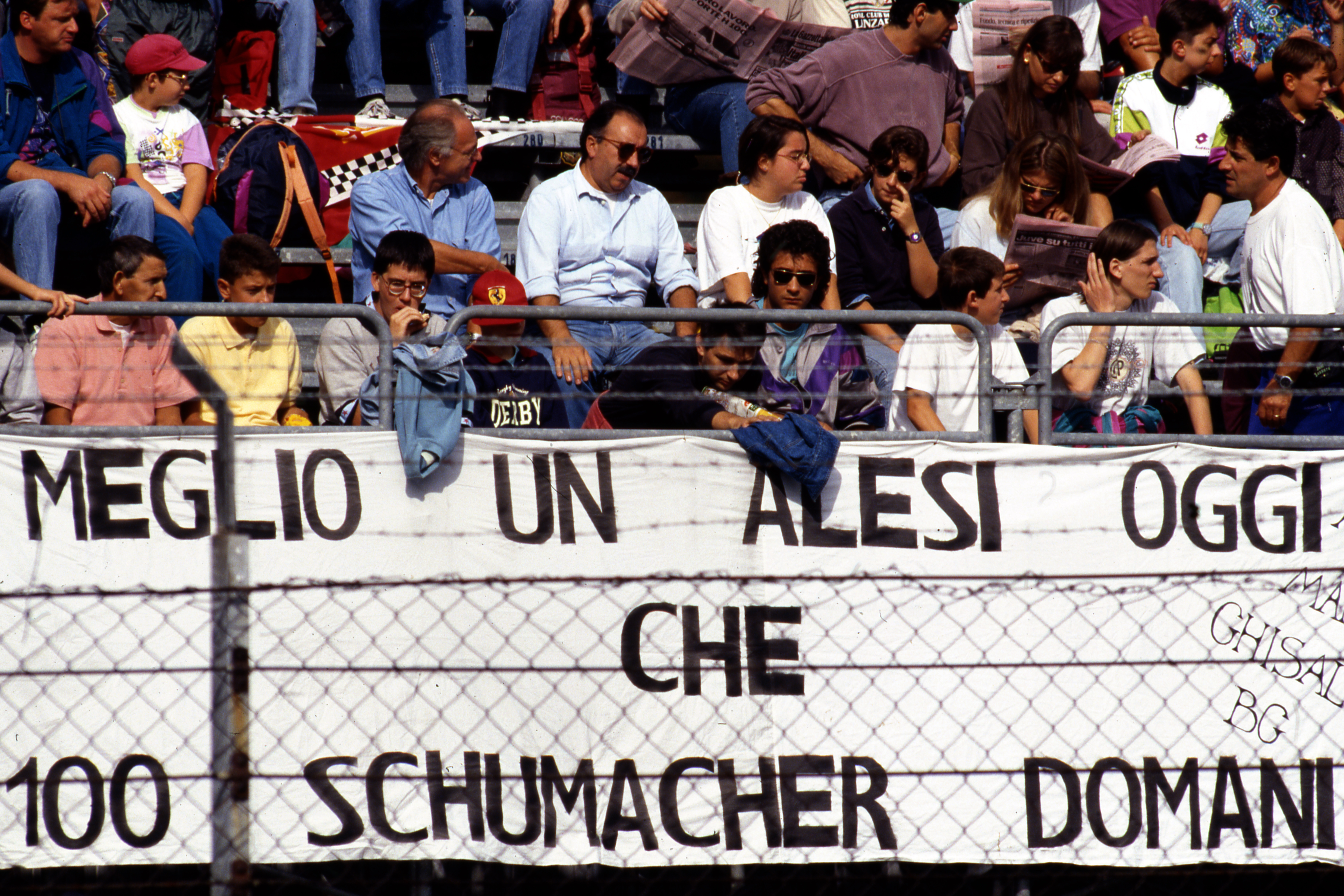
Alesi’s retirement was particularly heartbreaking for the Monza fan with the banner reading ‘1 Alesi today is worth 1000 Schumachers tomorrow’. That was in reference to the seismic driver market news that Schumacher was leaving Benetton to join Ferrari for an estimated $25million salary, with Alesi going the other way and Berger following him.
Given their respective eventual Ferrari tallies of 72 race wins and five world titles (Schumacher) versus 1 race win (Alesi), that banner turned out to be a little inaccurate, but it did show the strength of feeling around a driver reshuffle that was changing the face of F1.
Few were mentioning Irvine as a Ferrari option at this point, with all the attention on his Jordan team-mate Rubens Barrichello instead – and Coulthard entering the fray as a wildcard.
He was losing his Williams seat to incoming rookie Jacques Villeneuve, having failed to follow up his impressive 1994 form at first amid poor fitness following a rough bout of tonsillitis and a driving style struggle resolved by a chat with mentor Jackie Stewart. That paid off with his Spa drive and a dominant Monza pole, although spinning off on the formation lap and only getting reprieved by a red flag caused by crashing backmarkers wasn’t so great for Coulthard’s driver market standing. McLaren was always his most likely destination, but that was complicated by Prost lurking in the background and mulling an F1 return.
The Alesi/Berger to Benetton news meant Herbert’s ejection, and that left him feeling free to let rip about his treatment from the team in the build-up to Monza – alleging that he had been deliberately hampered because he got too close to Schumacher’s pace in his first tests. The Italian GP victory felt very sweet to Herbert, who would eventually end up joining Monza podium star Heinz-Harald Frentzen at Sauber, in that context…
SHAMBOLIC BACKMARKERS
My soft spot for 1995 is also because of the messiness of the back of the field. Pre-qualifying was long gone by then, but its spirit lived on with the struggles of Pacific and Forti to make it from race to race still afloat, and pay drivers such as Inoue getting as high up the midfield as an Arrows seat. Rewatching the Spa and Monza races was a reminder of just how many times during a weekend that tail-end pack found comedic ways to crash out.
F1 is far, far more polished and professional than it looked when wandering mobile chicane Inoue was giving the leaders headaches while being lapped at Monza or the pile-up of backmarkers that got Coulthard back into that race blocked the track at the Ascaris, but I really miss those rough edges and the curveballs they threw in.






